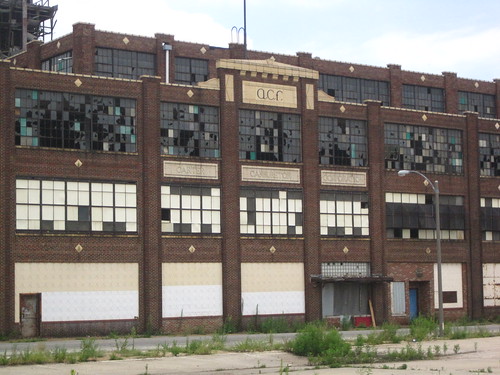by Michael R. Allen
On March 31, the Environmental Protection Agency (EPA) released an Action Memorandum for the cleanup of the Carter Carburetor plant at St. Louis and Grand avenues in JeffVanderLou. This action surprised residents of surrounding neighborhoods, who had hoped for more time to understand the science behind the cleanup methods. In February, after the close of the public comment period for the action, the EPA provided a citizens’ group with a Technical Assistance Services for Communities (TASC) consultant who is still in the process of getting answers for the citizens.

Among the questions is whether the Carter Carburetor building should be demolished. The EPA’s preferred alternative of total demolition has become the action proposed in the action memorandum:
The Carter Building, Inc. (CBI) Building – The action for this area is demolition and off-site disposal. After completing the remediation of asbestos-containing material, the CBI building will be demolished and building materials disposed based on PCB concentrations.
This action uses federal funding and will trigger a Section 106 review under the National Historic Preservation Act, since the Carter Carburetor plant is likely to be eligible for National Register of Historic Places listing. The less-significant Willco Plastics building could be retained, however:
The Willco Building – Because PCB contamination in the Willco Building is relatively low, a thorough cleaning may be sufficient. If the cleaning does not reduce the contamination to below acceptable levels, the first and second floor slabs would be partially removed and replaced.
The owners of the Carter Carburetor building want to retain it and reuse it. At issue is whether heavy PCB contamination can be removed successfully from the building. Concrete floor slabs will have to be replaced, according to the EPA, but that still leaves upright and vertical concrete structural components that cannot be removed and replaced. The EPA states that these would have to be coated with epoxy that would need 5-year maintenance in order to be safe for workday exposure.
One question posed to the TASC consultant is whether such epoxy coating has ever been done on the scale of Carter Carburetor, and whether it can be effective. Also unknown, because PCB contamination usually leads to demolition, is whether there are other methods for remediation than those the EPA has offered. Anyone know of any case studies?

One reply on “EPA: Carter Carburetor Building Will Be Demolished”
This one hit like a punch to the gut. CC, gone? I just can’t imagine it.